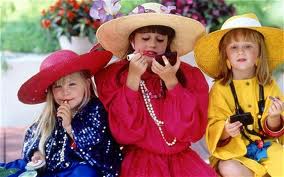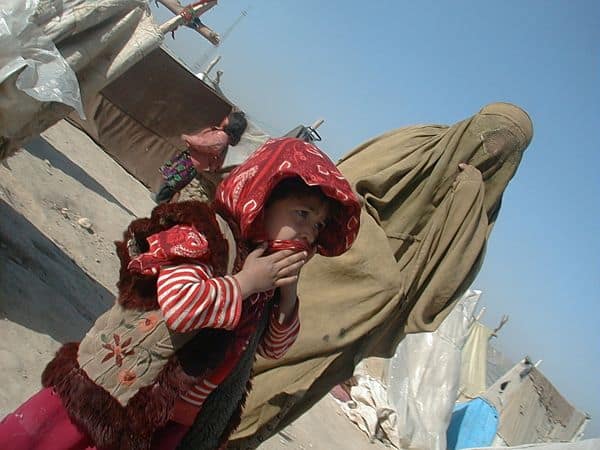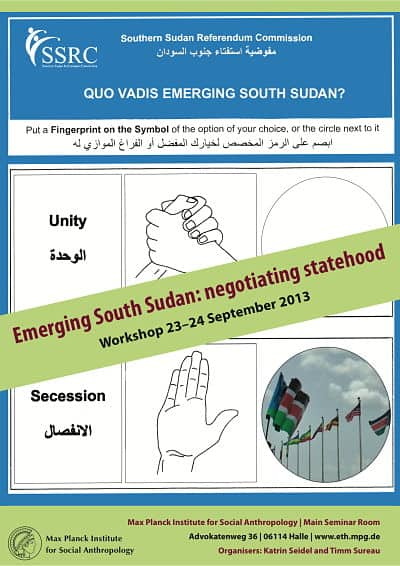ALLEGRA: Felix Girke – we are thrilled to be officially welcoming you as Allegra’s Master of Ceremonies for both for our count-down for the EASA 2014 as well as for our coverage during the event!
FELIX GIRKE: Thank you for volunteering for these positions! I’m sure it was hard for you to turn down all the other applicants!
 A: Given this role of considerable prestige & intense visibility, what should we know of you? Of course, we know that you are an anthropologist working on a bit of this and – and most importantly, that you are one of ‘Allie’s Allies’, as you have yourself cleverly named our devoted fans. But what about past the obvious – how did you end up becoming an anthropologist, and just what all is that you have studied or study at present? Perhaps also a word or two of your current academic context?
A: Given this role of considerable prestige & intense visibility, what should we know of you? Of course, we know that you are an anthropologist working on a bit of this and – and most importantly, that you are one of ‘Allie’s Allies’, as you have yourself cleverly named our devoted fans. But what about past the obvious – how did you end up becoming an anthropologist, and just what all is that you have studied or study at present? Perhaps also a word or two of your current academic context?
F: I blame my teachers! After having studied anthropology, philosophy and geography for two years at the Johannes Gutenberg University in Mainz, Germany, I embarked on an ERASMUS-financed year abroad at the University of Kent. It was there that I really got into studying hard. I had a bunch of fantastic teachers, so I’ll give a shout out to Roy Ellen, Bill Watson, and the late John Bousfield, for making me want to be an anthropologist! It was so different and extraordinary.
Lecturers and professors were interested in me and my work, encouraged me, stopped in the hallway and suggested and even lent me books. New horizons opened, and I read like a thing possessed, spending twenty hours a week in the library. Nearly. Anyway.
Returning to Mainz afterward, I apprenticed myself to Ivo Strecker, an inspiring and wonderfully polarizing professor with decades of fieldwork experience in southern Ethiopia, specifically among the Kara. Together with one more colleague, Christian Meyer, we shared an office for a few years, and it was a fantastically stimulating atmosphere: my first laboratory! We also read a lot, gave texts to each other, designed projects, and offered refuge in our office to all bedraggled colleagues and students who needed to retreat from the madness for a while, with tea and friendly banter.
Besides getting a chance to work in Ethiopia during that period, we were organizing four major conferences on Rhetoric Culture, the theoretical approach I still pursue. If you scroll through the list of attendants at these events, four of which were held in Mainz between 2002 and 2005, you can see that it was quite an impressive line-up. It was exciting to be part of that, as a younger researcher, and I always try to recapture that spirit. With Ivo’s retirement in 2005, I moved to Halle, where I joined the Department of Günther Schlee at the Max Planck Institute for Social Anthropology, got to do more fieldwork among the Kara in Southern Ethiopia, and managed to complete my PhD thesis on interethnic relations in 2009.
Then, there was a brief stint at the Research Group “Social Anthropology” at the Faculty of Sociology at Bielefeld, where I also hung out quite a bit with the Qualitative Sociologists. Their love of Conversation Analysis and other methods was again really stimulating, and I really learned a lot there. During that time, I also began reading up on Myanmar, which was to become my second field. I initially planned to work on moral tourism to Myanmar, but now the focus lies on the politics of heritage, or heritage-making, or heritage-isation. Any of these work fine.
From Bielefeld, I returned to Halle to become a research coordinator at the Centre for Interdisciplinary Area Studies. I maintain my Ethiopian connections, but it’s Myanmar that will mostly occupy me for the next years. Between 2012 and 2013, I spent six months in the former capital Yangon, where I investigated ethnic theme parks, colonial architecture, museums and memorials, and media representations.
I was really happy to read what Noel Salazar said on Allegra recently – cultural heritage being one of the big things right now. Myanmar of course was virtually locked down for decades, with very little social science research being feasible at all. So to work there now, and engage with people from Myanmar, is exciting.
As is being among Allie’s Allies.
A: We know that the EASA is quite the familiar event to you. Could you share with us some of your most precious memories (both those from the formal and informal agendas qualify!)?
F: I did miss out on Maynooth and Nanterre (the latter only just and with much chagrin), but I have very fond memories of Copenhagen and Ljubljana. I do recall being quite impressed by Thomas Hylland Eriksen in Copenhagen, who stood up when it was his turn, said something like “so, I had prepared a presentation, but after listening to what the people before me said, I will talk about something else instead,” and he gave an extremely coherent presentation apparently totally ad-lib. This was really diagnostic of the overall atmosphere, a bit playful and definitely rather relaxed.
 As is usual, the best moments were not during panels and workshops, but in the spaces between. For me, the very best was my accommodation in Copenhagen – Ivo Strecker and his wife, Jean Lydall, had arrived per sailboat, and we all slept right there on the boat, and in the evenings we kept inviting interesting colleagues we had met during the day for somewhat raucous dinners, with the occasional drink thrown in. Guitars were involved. Singing, too. The entire quay must have enjoyed our parties. Towards the end of the conference, somebody even said to me, “oh, you are one of those boat people.” Notoriety! And then, the three of us sailed back to Germany over a couple of days.
As is usual, the best moments were not during panels and workshops, but in the spaces between. For me, the very best was my accommodation in Copenhagen – Ivo Strecker and his wife, Jean Lydall, had arrived per sailboat, and we all slept right there on the boat, and in the evenings we kept inviting interesting colleagues we had met during the day for somewhat raucous dinners, with the occasional drink thrown in. Guitars were involved. Singing, too. The entire quay must have enjoyed our parties. Towards the end of the conference, somebody even said to me, “oh, you are one of those boat people.” Notoriety! And then, the three of us sailed back to Germany over a couple of days.
 In Ljubljana, I was struck by the fact that at least one centrally located bookstore had its entire window filled with local translations of anthropological books, mostly classics. This was evidence that the conference was nicely integrated into this beautiful city, and that anthropology apparently had an audience in Slovenia. Which I still today always pronounce as “S-love-enia.” Good atmosphere all around, lots of engaged younger scholars… EASA really has its own brand of people, I think.
In Ljubljana, I was struck by the fact that at least one centrally located bookstore had its entire window filled with local translations of anthropological books, mostly classics. This was evidence that the conference was nicely integrated into this beautiful city, and that anthropology apparently had an audience in Slovenia. Which I still today always pronounce as “S-love-enia.” Good atmosphere all around, lots of engaged younger scholars… EASA really has its own brand of people, I think.
What kind of expectations do you have for this EASA meeting in specific? Or more directly still, in line of your previous experiences, what should be done better this time?
From what I know about the organization of this conference, it’s clear that the organizers have put a lot of thought into structure and format. The list of panels seems solid, and the theme, Collaboration, Intimacy & Revolution – innovation and continuity in an interconnected world, certainly strikes a chord for many anthropologists, being timely and relevant, so that continues a good tradition. But without too many spoilers in regard to our upcoming interview with Carlo Cubero from the committee, in charge of its 16 laboratories, it’s clear that they want to turn all of Tallinn into an anthropological festival. Rather than confining the scholars to a venue, with appropriate cordons sanitaires between “us” and “them” in the street, this is a conference that is taking to the streets. I haven’t been as excited about a major professional gathering ever. Honestly, I go by the rule of thumb that “bigger is usually worse” in regard to conferences; I best love smaller workshops of 10-12 people, or committed events like the Rhetoric Culture Conferences which went over four days, but had “only” about 40 attendants, who really got into the zone over that time. But this EASA will break the mold. And maybe throw it away.
Whoever is up next to host the conference, I expect they will really be hard-pressed to match what Tallinn will be offering.
A: To conclude, a few thoughts on the social media & scholarly debates. Where do you see the greatest importance to lie in regards to social media experiments as Allegra? Where do you see scholarly social media discussions as being headed – and would you dare to predict where we might find ourselves in, say, five years from now?
F: Predictions are tricky, and as a German politician said, people having visions should see a doctor. Experimental formats like Allegra will develop, emerge, expand, recede, die off, be re-born, and will and should remain in flux, surfing on the technological possibilities afforded by ever-new digital platforms. That is how it should be. Keep us on our toes, providing constant challenges to engage with topics in different and unusual ways. Even if we don’t know just where the ride is going, it seems worthwhile; until it doesn’t, and then we’ll do something else. So that’s good. There will be more virtual conferences, people will find new ways to do fieldwork, and rather than having the reference “pers. comm. with the author”, we will have “tweeted on Dec. 23, 2014”. But that’s more of a gradual shift that will occur, though, minor stuff really.
Academia as a broad enterprise is pretty resilient to comprehensive change. Many gatekeepers today are still too distrustful of new formats, and who can blame them?
But social media in general is a mixed bag, I feel: as mentioned above, it facilitates global connectivity, and in scholarly matters is a great multiplier and accelerator of news. At the same time, social media encourage us to be online all the time, invading privacy and disrupting more intense work requiring a degree of isolation. That’s an individual challenge, though: we all need to regularly check our time allotment to stuff like this.
What should be big and important, and probably driven home to our students at every moment, is the opportunity to engage with new audiences, to reach people who usually cannot and would not access paywall-hidden journal articles. I think Sarah Kendzior is awesome in that way, and I can hardly begin to think where her journey as a public intellectual –which now includes a crowdfunding project to pay adjuncts to help people get their high school degrees– will take her. I hope more people manage to combine such effortless prose with ethnographically and anthropologically informed depth of understanding and social media savvy. That could achieve a lot in making our work more visible and more relevant.
Allegra thanks you for all your hard work in advance & looks forward to ALL the excitement to come with enthusiasm & impatience. Stay tuned for much more!
Feature image: July 1987 Joel Grey dressed as the Master of Ceremonies, the sardonic musical commentator on the story in the play and movie Cabaret. Image by © Douglas Kirkland/CORBIS









